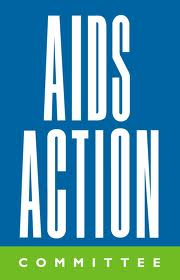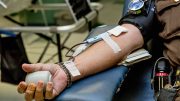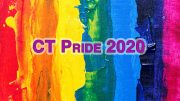The level of awareness of HIV infection status has increased among men who have sex with men (MSM) testing positive for HIV in a 20-city study, according to a U.S. Centers for Disease Control (CDC) analysis of data from the National HIV Behavioral Surveillance (NHBS). But the proportion of men aware of their infection remained lowest among Black MSM.
Because awareness of HIV-positive status is a critical first step in obtaining care and treatment and preventing the spread of HIV, researchers examined trends in HIV prevalence and status of awareness among MSM. Using data from CDC’s NHBS, which conducts surveys on HIV-related risk and protective behaviors and provides HIV testing in 20 US cities with a high HIV/AIDS burden, researchers measured changes in the proportion of MSM testing positive for HIV from 2008 to 2011. In addition, among those testing positive, researchers assessed changes in the proportion who said that they were already aware of their infection due to a previous HIV test.
These findings were reported at last month’s Conference on Retroviruses and Opportunistic Infections (CROI) in Atlanta.
- HIV prevalence remained steady during the period – 19% of MSM tested positive in 2008, and 18% in 2011.
- As would be expected, HIV prevalence increased with age: In 2011, HIV prevalence rose from 12% among MSM 18 to 24 years old to 26% among MSM age 40 years or older.
- Overall HIV prevalence was about twice as high among Black MSM (30%) than among Hispanic/Latino MSM (15%), White MSM (14%), and MSM of other races (14%).
- The proportion of those testing positive that were already aware of their infection increased from 56% in 2008 to 66% in 2011. HIV awareness increased in all age categories and across all racial groups. However, the proportion of men aware of their infection remained lowest (54%) among Black MSM in 2011.
CDC notes that, “Since half of all new infections are transmitted by people who are unaware of their HIV-positive status, these increases in awareness are encouraging, but continuing racial/ethnic disparities are concerning. [The] authors conclude that outreach and testing programs should be sustained and that efforts to reduce disparities remain critical in the fight against HIV.”
The audio and slides for this CROI presentation are available at this link on the CROI website; the presentation and follow-up questions and answers comprise the first 18-minutes of the session.
Issue Brief Focuses on HIV/AIDS, STDs, and Viral Hepatitis Among Native Gay Men and Two Spirit People
In conjunction with last month’s National Native HIV/AIDS Awareness Day, the National Association of State and Territorial AIDS Directors (NASTAD) published a new seven-page issue brief highlighting key issues that affect the risks for HIV/AIDS, sexually transmitted diseases (STDs), and viral hepatitis among Native gay men and Two Spirit people. The issue brief, Native Gay Men and Two Spirit People and HIV/AIDS and Viral Hepatitis Programs and Services, is the result of a collaborative effort involving NASTAD’s Native American Networking Group and Gay Men’s Health Equity Work Group.
American Indian and Alaska Native (AI/AN) MSM and AI/AN MSM with a history of injection drug use (MSM/IDU) account for 58% and 15%, respectively, of all AI/AN people living with HIV through 2010, according to the NASTAD brief. “AI/AN people experience elevated rates of risk behaviors that contribute to HIV/AIDS and other STDs. In 2005, AI/AN people had the second highest rates of gonorrhea and chlamydia and third highest rates of primary and secondary syphilis.” In addition, “according to the 2011 National Survey on Drug Use and Health, AI/AN people have a higher rate of lifetime illicit drug use than persons of other races/ethnicities (58% versus 47%).”
The NASTAD issue brief also notes that AI/AN communities are negatively affected by a range of socioeconomic factors, including low educational attainment, underemployment and unemployment, and higher rates of poverty, violence, and trauma. To help state and local health departments address these issues, NASTAD worked with Native gay men, Two Spirit people, and health department representatives to develop a series of recommendations to tailor HIV, STD, and viral hepatitis services for Native gay men and Two Spirit people. The recommendations include:
- Letting improved data about Native gay men and Two Spirit people drive funding decisions;
- Including Native gay men and Two Spirit people in HIV/AIDS planning groups and councils;
- Supporting Native gay and Two Spirit people’s organizations and communities;
- Offer culturally appropriate services;
- Breaking down bureaucratic silos;
- Building public health capacity to work effectively with Native gay men and Two Spirit people and connect with tribal leaders;
- Implementing strategies to capitalize on social networks; and
- Using new tools to effectively communicate the impact of HIV/AIDS, viral hepatitis, and STDs on Native gay men and Two Spirit people.
National Youth HIV and AIDS Awareness Day (April 10)
The first National Youth HIV and AIDS Awareness Day (NYHAAD) is being observed this year on Wednesday, March 10. Although NYHAAD has not yet been officially designated as one of the federal government’s HIV/AIDS awareness days, it has been embraced by numerous national and state organizations, including Advocates for Youth, AIDS United, National Alliance of State and Territorial AIDS Directors, National Coalition for LGBT Health, National Minority AIDS Council, and Sexuality Information and Information Council of the United States.
According to Advocates for Youth, “The creation of NYHAAD is a step toward acknowledging and addressing the needs of young people in the HIV and AIDS response. Each year, young activists in high schools and at colleges and universities across the country will use this day to organize and educate about HIV and AIDS. They will promote HIV testing, fight stigma, and start the necessary conversation we need to deal honestly and effectively with the challenges we face. NYHAAD will also provide a yearly date for all of us to hold our leaders responsible to their commitments and invest in realizing an AIDS-free generation.”
Online resources focusing on HIV/AIDS among adolescents and young adults including the following:.
- National Youth HIV and AIDS Awareness Day: This is the web page for NYHAAD. It provides background information about the day, together with links to a list of the day’s founding partners, a petition calling for federal recognition of the NYHAAD, and information resources focusing on HIV/AIDS among young persons.
- Vital Signs: HIV Infection, Testing, and Risk Behaviors Among Youths – United States. Article dated November 27, 2012 in MMWR.
- Vital Signs: HIV Among Youth in the U.S. Online fact sheet/infographic from the Centers for Disease Control and Prevention (CDC).
- HIV Surveillance in Adolescents and Young Adults. CDC slide set.
- HIV/AIDS Among Youth. CDC fact sheet.
- Trends in HIV-Related Risk Behaviors Among High School Students – United States, 1991–2011. Article dated July 27, 2012 in MMWR.
- Sexual Identity, Sex of Sexual Contacts, and Health-Risk Behaviors Among Students in Grades 9–12 in Selected Sites – Youth Risk Behavior Surveillance, United States, 2001–2009. Article dated 2011 in MMWR.
- Youth Risk Behavior Surveillance – United States, 2011. Report dated June 12, 2012 in MMWR.
- Reclaiming Our Future: The State of AIDS Among Black Youth in America. A report from the Black AIDS Institute.
- HIV Transmission and Prevention in Adolescents. Chapter from the HIV InSite Knowledge Base.
- Fact Sheets from Advocates for Youth:
- Young People and HIV in the United States
- Young People Living with HIV Around the World
- How Social and Cultural Forces Lead to Unequal Risk for African Americans/Blacks (focus on youth)
- Young Women of Color and the HIV Epidemic
- Young African American Women and HIV
- Young Women of Color and Their Risk for HIV and Other STIs
- HIV and Young American Indian/Alaska Native Women
- HIV/STD Prevention and Young Men Who Have Sex with Men. Also available in Spanish.
- Young Men Who Have Sex with Men: At Risk for HIV and STIs. Also available in Spanish.
*Eric Brus is the Director of HIV Health Promotion of AIDS Action Committee. This report is produced by the Health Library of the AIDS Action Committee in collaboration with the New England AIDS Education and Training Center Minority AIDS Initiative Project. The full version is available online.








